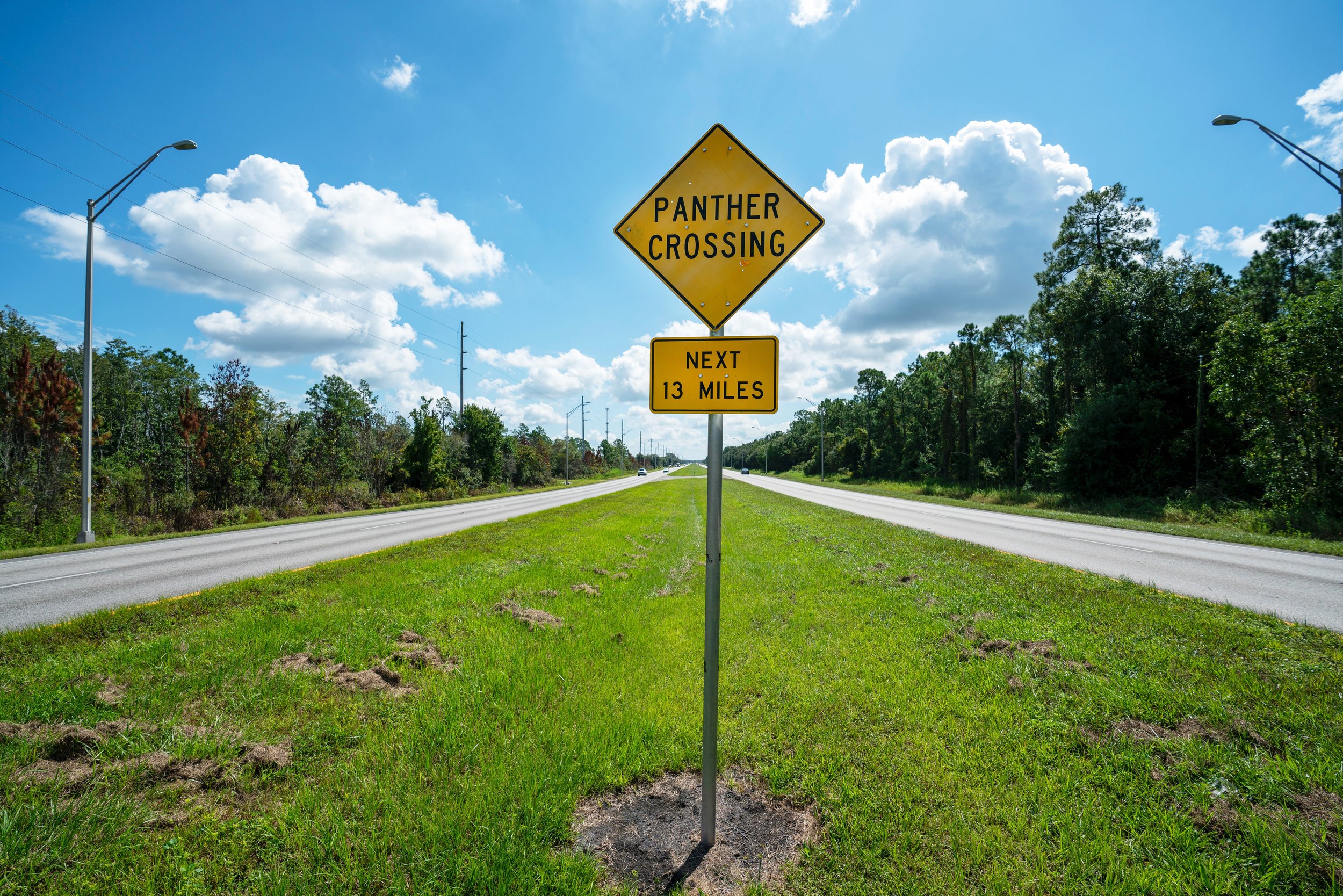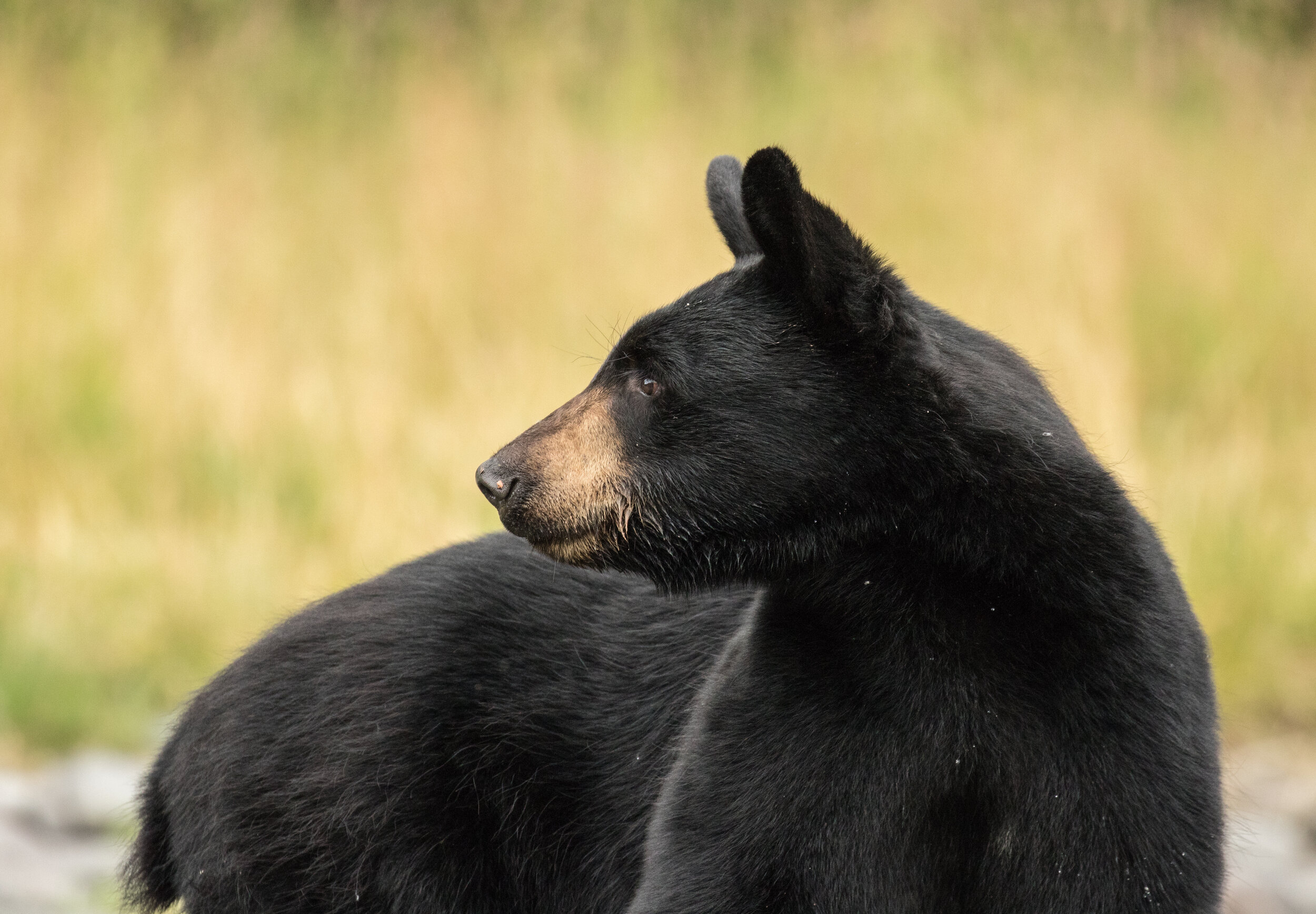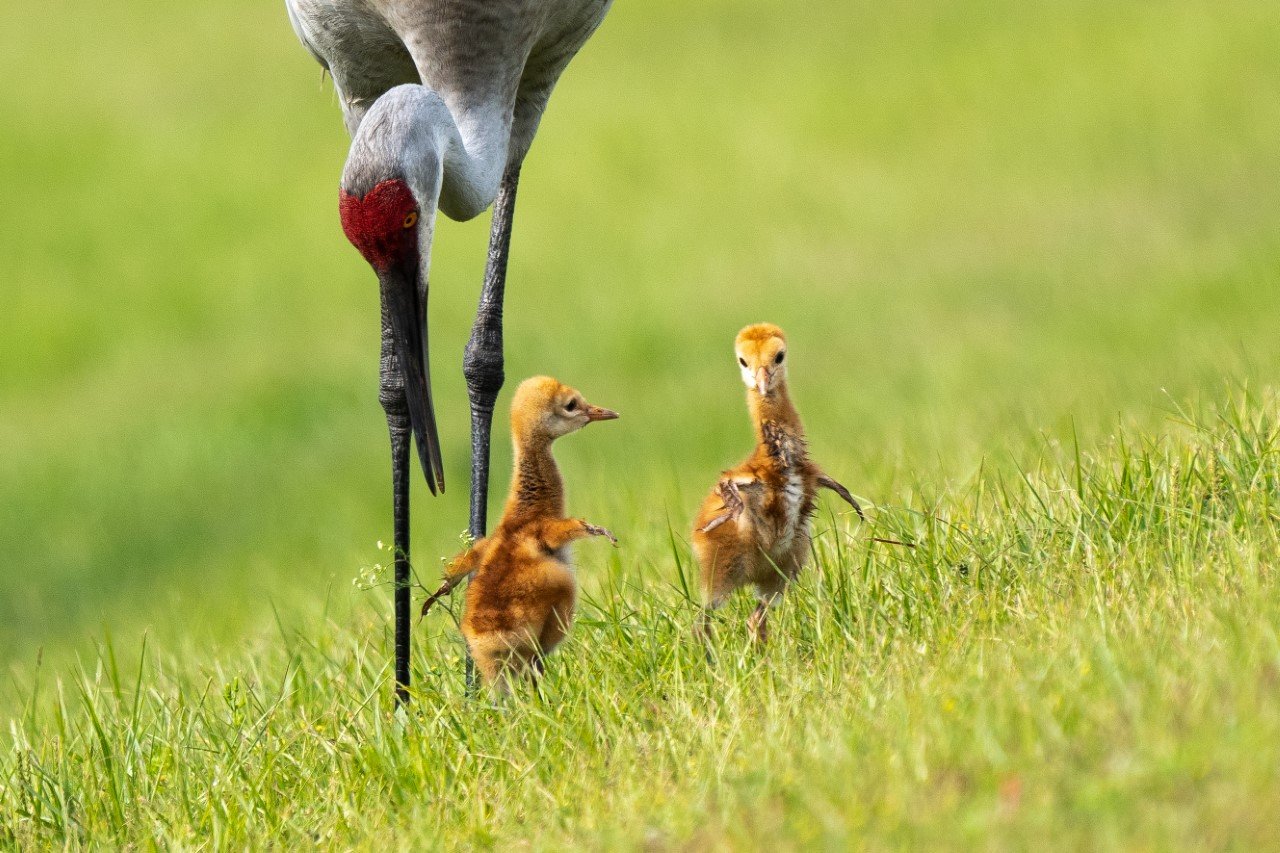Skater Embarks On 1,000-Mile trip to benefit wildlife, Conservation Florida
Justin Bright is raising money and awareness for Conservation Florida by traveling across the state on a skateboard. His journey provides a glimpse of the obstacles and dangers faced by Florida’s wildlife as they search for wild lands that are connected and protected.
by Justin Bright
A special camping trip at Shell Key for my 10th birthday gave me childlike wonder for wild Florida and its “magic” that I never grew out of. I’ve made memories with my dad and friends my whole life on that small barrier island off the coast of St. Petersburg. In college, my favorite hometown wilderness would end up being the perfect example of Florida’s overdevelopment crisis and battle with climate change as Shell Key was partially developed for condos and its shores continued to erode. I recently visited the island to see least terns and American oystercatchers (pictured above) during nesting season, and the looming concrete buildings beside pristine waterways and sandy dunes was a sad reality check. But still, those birds continue to nest on its shores year after year and the shrinking island still serves as a sanctuary for threatened wildlife.
My appreciation for Florida’s natural wonders started early. Growing up, I quickly realized I lived on a peninsula truly unique from anything else in the world.
I was born and raised in St. Petersburg, in Pinellas County — the most densely populated county in the state, with almost 3,000 people per square mile. I spent my childhood weekends exploring the area’s beautiful coastline with my dad and younger brother, and I experienced firsthand the consequences of relentless concrete expansion on native ecosystems.
I dreamed up a self-supported trek across my home state from these childhood experiences that cultivated my great appreciation for Florida and its wildlife — and of course my passion for skating long distances. A journey from the Panhandle to Key West is incredibly difficult for a human. So, imagine the dangers facing our state’s wildlife as they try to navigate roads and developments that have fragmented the land they need to survive.
I started skateboarding when I was 13. Other than learning new tricks, I was pushing my board 10 miles to a find skate spot or meet friends — planting a seed for distance skating without realizing it. Around the same time, I discovered I had a knack for skate filming which helped keep me skating for the next decade.
I recently graduated from the University of Florida with a master’s in mass communications after studying journalism and wildlife ecology as an undergrad. I took an avian ecology class during my third year that completely blew my mind about the incredible biodiversity in the bird world and ecosystems at large.
I started birding more and covering environmental issues as a photo and video journalist, which led me to more deeply understand the urgent ecological threats that my home state is dealing with.
We live in one of the most biodiverse places on earth with life found nowhere else but here, from scrub jays to gopher tortoises, coral reefs and pine savannas.
When I first had the idea of a self-supported trip on my skateboard, I couldn’t ignore the similarities between a person undertaking a trip like this and native wildlife trying to cross the state in the same way.
My statewide skateboarding trip is about more than just a guy and his board making it from the Alabama boarder to Key West. It is about the connectivity needed to do that, for the safety of both people and animals.
From a Bear’s Point of View
If it’s dangerous for me to navigate the never-ending web of roads on my way from the panhandle to the Keys, how hard must it be for a black bear or Florida panther?
According to a Federal Highway Administration study, there are an estimated 1-2 million collisions between cars and large animals every year in the United States.
This presents a real danger to human safety as well as wildlife survival. The study identified the Florida panther and the Florida Scrub Jay among 21 federally listed threatened or endangered species in the United States for which road mortality is among the major threats to the survival of the species.
The unnecessary deaths of wildlife that occur as animals navigate between conservation lands, crossing roads when they must, threaten biodiversity and can have long-term effects on ecosystems. In addition, animals on roadways endanger both drivers and wildlife.
According to the DMV, a collision with some form of wildlife occurs, on average, every 39 minutes, and 1 out of every 17 car collisions involves wandering wild animals.
Photo by Adam Bass.
According to the Florida Fish and Wildlife Conservation Commission, vehicle collisions are responsible for 90% of the known bear deaths. Collisions have been on the rise since data collection first began in 1976 due to factors such as increasing human populations and development and fragmenting wooded areas which cause bears to cross roads more frequently.
Prior to the year 2000, yearly panther roadkills were four or fewer. But beginning in 2000, these numbers have ranged from six to 34 annually. Panther deaths caused by vehicle collisions have been sharply reduced in areas where crossings and fencing are in place. Currently, there are 60 wildlife crossings or bridges that have been modified for use by panthers on Florida’s roads.
Finding Hope Through Florida’s Habitats
My 1,000-mile skateboard journey took me through every critical Florida ecosystem...and it provided me with a unique glimpse of what it is like for Florida wildlife to navigate between the diminishing habitats they call home.
As Florida’s population booms, new roads, housing developments, and shopping centers fragment natural ecosystems and cut off movement. Protecting land within the Florida Wildlife Corridor preserves wildlife habitat and gives wide-ranging animals like the Florida black bear and panther the territory they need to survive and thrive. We call it “room to roam.”
Without wildlife corridors, iconic species like the Florida black bear and Florida panther are at risk of becoming isolated in small islands of protected lands. Corridors allow individual animals from different populations to successfully breed and ensure genetic diversity. They also allow animals to move to different habitats to find food and water, as part of their natural migration patterns.
Conservation Florida has been working on connecting key segments of the Florida Wildlife Corridor since its founding in 1999. Together with its incredible partners and supporters, Conservation Florida is now actively leading the charge to protect over 100,000 acres with the Corridor.
Some of the damage we have done to this one-of-a-kind landscape is irreparable. The Everglades will never flow the same way it once did. Our old growth forests and the communities they supported are long gone; but, we still have so much to conserve for the present and future.
If we want to point things back in the right direction, we have to be aggressive about prioritizing land over profit. To me, conservation and environmental justice are invaluable parts of social progress around the world.
I hope that my trip can draw attention to the challenges that wildlife face as their habitats continue to diminish, with the greater goal of spreading awareness of the need for a connected Florida Wildlife Corridor.
I hope that folks might feel inspired to visit a new part of Florida and fall in love with it. I saw nearly every ecosystem the state has to offer (and there are a lot!).
I want people to see the results of ongoing habitat fragmentation and the perils that roaming wildlife face while trying to access resources to survive. That realization should also spark hope and accountability for the future. I also hope that people go out and skate!!!
Connecting The Corridor
Justin's trip took him from the panhandle to the Florida Keys through the areas Conservation Florida is diligently working to connect and protect to form a statewide network of natural corridors called the Florida Wildlife Corridor.
“The Florida Wildlife Corridor provides a vision for Florida as a whole that protects the places we all love, offers habitat and room to roam for our native species, cleans and stores water, provides ample outdoor recreational opportunity, and supports Florida’s family farms and ranches, all while accounting for Florida’s future growth,” said Traci Deen, Conservation Florida’s CEO.
With the support of our supporters and partners, Conservation Florida is proudly working to to protect over 100,000 acres within the Florida Wildlife Corridor. Justin’s journey is drawing attention to the importance of safe roadway crossings for black bears, panthers, and many other species, including humans!
He is highlighting the importance of conserving land in a unique and extraordinary way. Cheer Justin on today and show your support for protecting land in the Florida Wildlife Corridor and beyond by making a generous donation.
Photos by Justin Bright.
About Conservation Florida’s ‘Voices for Conservation’ Series
From the sandhills to the swamps, Floridians don’t always agree, but we do find common ground in the land we share. Conservation connects us. It’s part of our ethos, our Floridian ethic. In it, there is hope for Florida’s conservation future.
Conservation Florida created Voices for Conservation to amplify the importance of protecting our native plants and wildlife, fresh water, family farms and ranches, and wild places.
The series of blogs and videos will feature Florida conservationists from all walks of life speaking up for a common goal – saving land. For nature. For people. Forever. Every voice offers a unique perspective, but at the heart of each story is the same powerful message. Protecting land is necessary to keep our state, its people, and its wildlife healthy and thriving.











